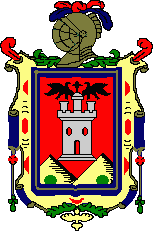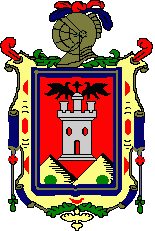Quito coat of arms

The coat of Arms of San Francisco of Quito was granted by the Emperor Carlos V, King of Germany and Spain, by means of Real Cedula of the 14 of the March of 1541 in the villa of Talavera - Spain. This second Cedula, because first it granted the title to him from city to San Francisco of Quito, granted the shield to him of the city, which stays until today.
The Real Cedula recognized Quito "all the preeminences, prerogatives and immunities that can and must enjoy as city" and ordered to all the Corte Real, which they respect and they make respect this category for Quito.
The document offers to the new City of Quito the shield of arms and blazons, that is conserved until now, which turns to him to the shield of Quito oldest of all those that they have the cities and provinces of Ecuador, which confirms the importance of this large city in the history of our country.
The Emperor ordered that in the shield of Quito it is "a castle of silver put between two hills or rocks, with a digging on the foot of each one of them of green color, and also upon the this castle a gold cross with his green foot that have in the hands two cracked black gold eagles, the one to the right hand and other to the left, puttings in flight, everything in field of Colorado, and by trimming a cord of gold San Francisco in blue field".
The shield was used immediately in all the acts of the Town hall of Quito. According to a report elaborated in 1914 by Pedro Pablo Traversari, who was Councilman of Quito, and whose original illustrated manuscript and by hand is conserved with fervor in the reserve of our Municipal Historical Museum, the oldest reproduction of the Shield of Quito still today we can appreciate is the shield carved in stone located in the outer part of the Convent of San Agustin. That stature, according to Traversari, is of 1573.
The Quito coat of arms, granted by Charles V, has a silver castle against a red background and a hill on either side of the castle's foot, also silver, and with a green colored cave in each. The castle is crowned by a golden cross with a green base, held by two eagles in flight.
The eagles are black, with streaks of gold. The ribbon is the rope belt of Saint Francis, patron of the city. It is gold in color, against a blue background. A golden helmet crowns the coat of arms. A few years after these arms were granted, the same Emperor honored the city with the titles of "great in nobility and loyalty", and granted it a royal standard. The arms represented the city, built on and among mountains.
It is represented as a cast because of its heroism and nobility, and a heraldic argent is the color of both hills and castle. The gold cross above the castle shows that the city was born under the sign of Christianity, and heralds its religious art which was to be the wonder of the Spanish speaking world. The eagles in flight are symbolic of the heights that Christianity would reach in the city, while the belt of the saint of Asis preserves the Franciscan spirit of Quito.

